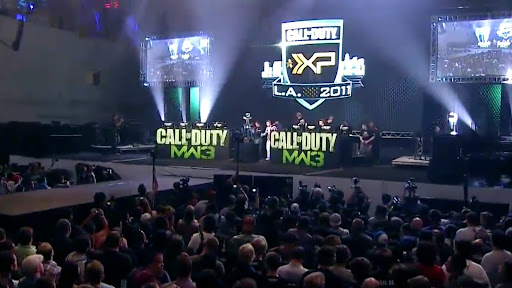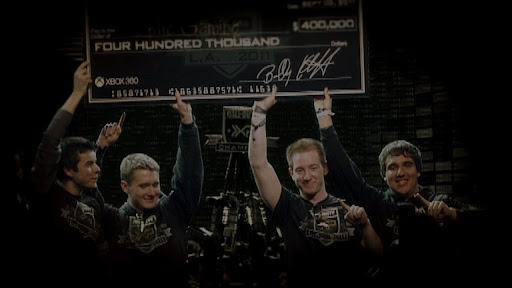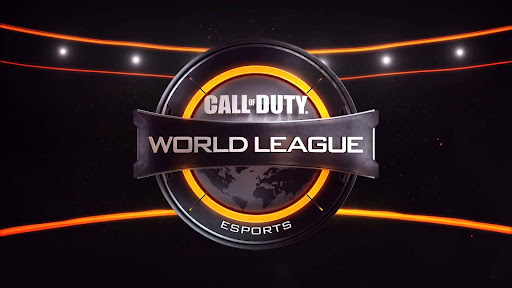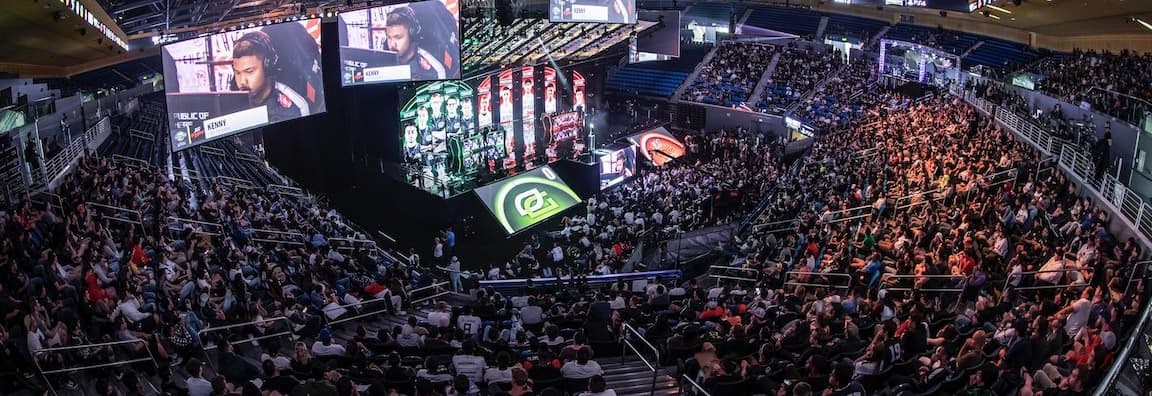Call of Duty has been at the forefront of the first-person shooter genre for nearly two decades, but Activision’s competitive multiplayer wasn’t always so successful.
The first Call of Duty arrived in 2003. It was a simple World War II simulation for Windows featuring multiplayer mainly to please modders. More recent installments like Black Ops Cold War push esports as a major selling point. This evolution started with Call of Duty 4: Modern Warfare. Developer Infinity Ward left the series’ roots for a modern setting and revolutionary multiplayer. Major League Gaming (MLG) tournaments eventually blossomed into the Call of Duty World League and the Call of Duty League.
COD 4 attracts competitive play, and MLG
In 2007, Counter-Strike and Halo ruled FPS esports. That is until Call of Duty 4: Modern Warfare was released. Fast-paced gameplay, tight controls, and 3-lane maps motivated players to go beyond online matches. Local LAN tournaments soon caught the eye of Major League Gaming.
COD 4 entered the rotation of competitive games for the 2008 and 2009 seasons, despite the release of World at War because many players didn’t like the gun balance. Gamebattles also propelled the series for players online, thanks to open ladders.
Community staples like Mike "Hastr0" Rufail, Raymond "Rambo" Lussier, and Matthew "Nadeshot" Haag all started as competitors in MLG’s Call of Duty Major League Championship. These players grew alongside COD’s competitive scene.
More MLG Championships and the Call of Duty XP event

Competitive play became more and more synonymous with each installment after World at War. MLG hosted championships for both Modern Warfare 2 and Black Ops. The latter had more tournaments than the past two games combined.
Black Ops also launched the careers of famous Call of Duty player Seth "Scump" Abner and current LA Thieves coach Jordan "JKap" Kaplan.
The series seemingly took a step backward when MLG didn’t feature Modern Warfare 3 in their roster. That didn’t stop Call of Duty from capturing the competitive community’s attention, or maybe it was part of the plan. Activision hosted their own Call of Duty XP event with a $1 million prize pool.
Call of Duty Championship

Black Ops 2 came with the announcement of the first annual Call of Duty Championship and another $1 million prize pool. The iconic rosters of Fariko Impact, Team Envy, and OpTic Gaming took first through third, respectively.
Despite the dislike toward Ghosts and Advanced Warfare, seven-digit prize pools were still hotly contested during the 2015 and 2015 Championships. The player base saw a bright future with the reveal of a familiar Call of Duty subtitle after these less-than-well-received games saw the same level of success.
Call of Duty World League

The Call of Duty World League emphasized esports through divisions. Pros and amateurs had distinct paths to capture the eyes of the community in Black Ops 3. This iteration was one of the most beloved titles in the franchise. It included the game modes Hardpoint, Capture the Flag, Uplink, and Search and Destroy. Activision’s huge move into competitive gaming opened up the floodgates for international play. Infinite Warfare held events in Sydney, Australia and Paris, France that set the tone for the eventual CDL.
The COD World League was the longest-running professional Call of Duty circuit. It ran from 2016-2019 for BO3, Infinite Warfare, World War II, and the Modern Warfare reboot.
The Call of Duty League faces a pandemic
The CDL was divisive. Amateur players felt excluded (only pros were likely to get drafted), while franchising didn’t appeal to every organization (reportedly expensive). Even fans were uncertain if their favorite players would stick around or how the league would come together.
Twelve franchised teams steadily announced their rosters. Rivalries developed between players and cities. At the heart of the excitement was $4.6 million. Activision really wanted this esports power play to succeed.
No one was prepared for what came next. The COVID-19 pandemic canceled all LAN tournaments, making 2020 an online-only event.
The teams locked in mentally and played their hearts out through tight competitions in front of thousands of online spectators. Their passion paid off when Activision confirmed another season. A huge win by the Dallas Empire, the first-ever CDL Championship team, ended a spectacular year.
The current state of competitive Call of Duty
The CDL continued into 2021, with the LA Thieves joining the league and OpTic moving to Chicago. Without a set championship date, the CDL is now back to LAN with Black Ops Cold War.
The league is no longer the only source of competitive Call of Duty. There are constant six-figure Warzone tournaments, while COD: Mobile sees its highest number of players ever.
Organizers such as UMG, CMG, and even PlayStation with the Black Ops Cold War Open Series give amateur players other avenues to showcase their aim and reflexes. Call of Duty’s evolution is incredible.
A new Call of Duty is on its way and will surely shift the competitive scene once again. New players, rules, and aesthetics keep the competitive scene fresh.
Fans often reminisce about the “good old days.” Truthfully, competitive COD is in the best spot it has ever been. The “good old days” are the ones ahead, paved by the moments that bring nostalgia from years past.
